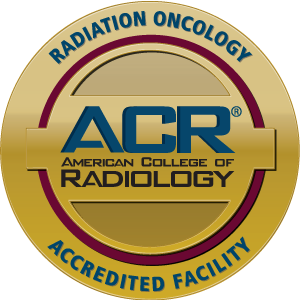Because the tissues of the anal area are particularly sensitive, they respond well to both chemotherapy and radiation.
The primary treatment for anal cancer combines these therapies, an approach called chemoradiation therapy, to maximize the response to each treatment.
Systemic chemotherapy + radiation therapy = chemoradiation
The medical and radiation oncologists on your team work together to prepare and plan your treatment for maximum benefit and your chemotherapy and radiation therapy treatments begin the same day. This therapeutic approach involves:
Chemotherapy uses anticancer drugs attack cancer cells, interrupting how they divide and multiply. The drugs used for anal cancer treatment are generally given through an intravenous (IV) infusion and include fluorouracil (5-FU), mitomycin and cisplatin.
Radiation therapy directs high-energy x-rays at the cancer cells to kill them. The x-rays create oxidizing molecules that disrupt the cancer cells’ function, damaging their DNA, causing the cancer cells to become overwhelmed and die.
The Roswell Park Department of Radiation Medicine offers the latest in cutting-edge technology and treatments, some of which are unavailable elsewhere in Western New York. We have a full-time multidisciplinary staff of radiation oncologists, dosimetrists, physicists, radiation therapists and more.
With anal cancers, the treatment area, the skin and tissue fold of the perineum, are highly sensitive to radiation irritation, more so than when radiation is given to other sites in the body. We offer an advanced radiation therapy, which reduces unnecessary radiation to the skin, reducing skin irritation and breakdown. The types of radiation therapy we use for anal cancer include:
- External Beam Radiation Therapy (EBRT). This is the most common method of delivering radiation for treatment of anal cancer. Radiation is usually delivered over 28 to 30 treatments and can be done in several ways, each with their own advantages.
- Volumetric Modulated Arc Therapy (VMAT). The VMAT technique is more complex and technical than other radiation therapies and requires state-of-the-art computer generated plans. The benefit: VMAT results in far less side effects than other therapies.
- 3-Dimensional Conformal Radiation Therapy (3D CRT). This is a form of EBRT where a few shaped radiation beams are aimed at the cancer target from different directions.

